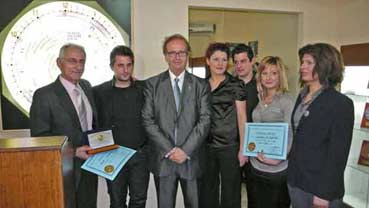Das
Naturhistorische Museum in Ligourio
The Natural History Museum in Ligourio
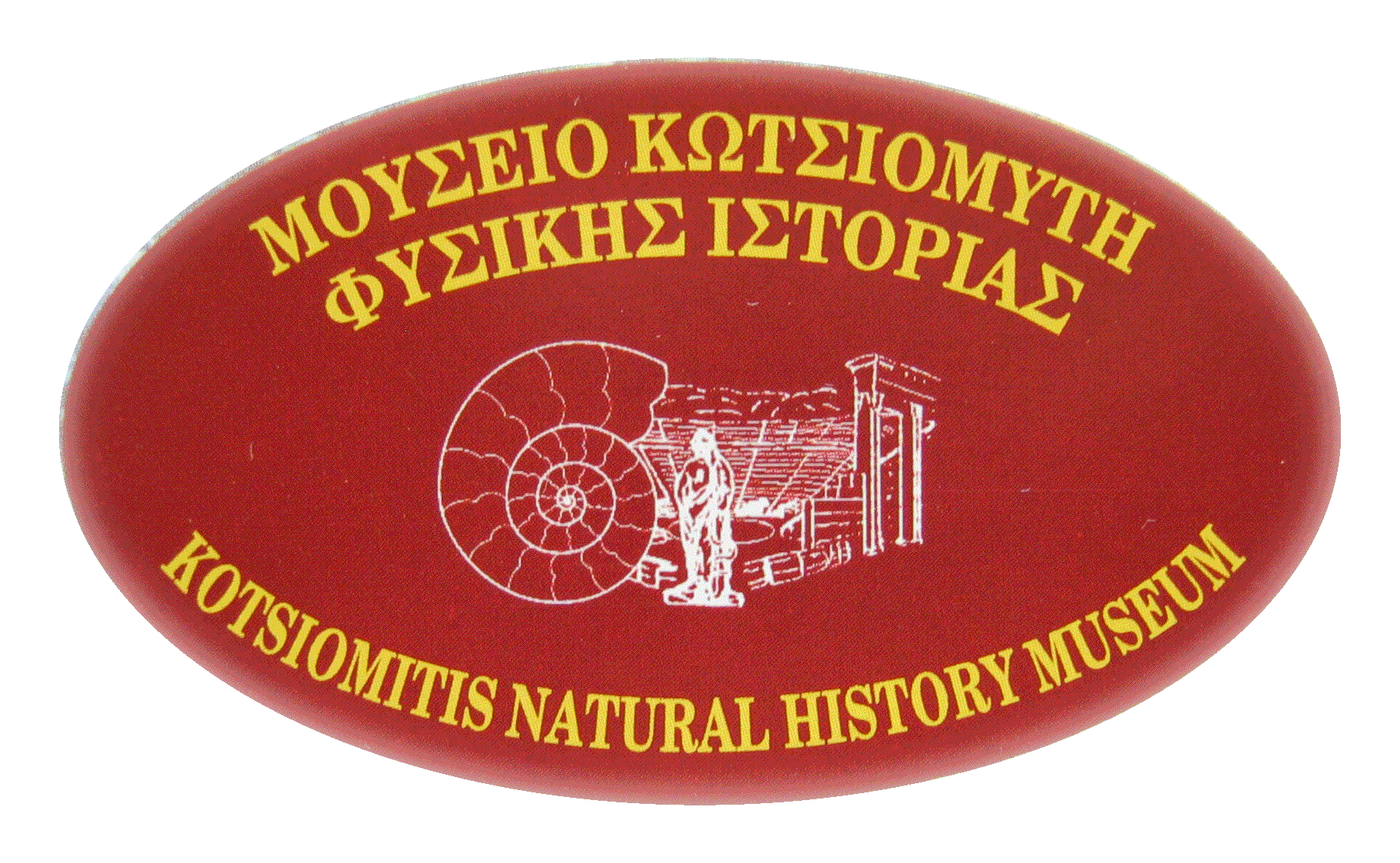
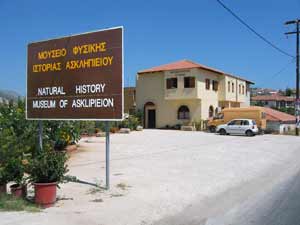
Das Museum befindet sich
an der Straße von Nafplio, gleich am Ortseingang von Ligourio
auf der linken Seite. Die Sammlung ist nicht nur mit viel Fleiß
und Liebe von der Familie Kotsiomiti zusammengetragen worden, sondern
ist auch sehr professionell gestaltet.
The museum is located at the road from Nafplio just
at the beginning of Ligourio on the left side. The Kotsiomitis family
not only collected the exhibits with hard work and love. Its design
is also very professional.
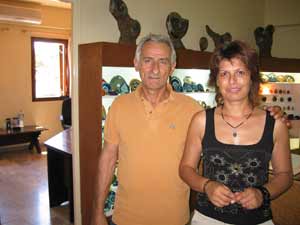

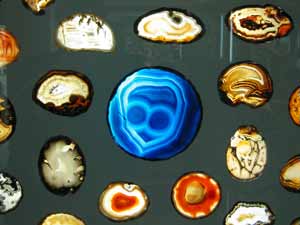
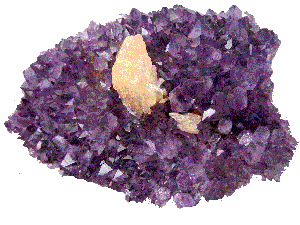
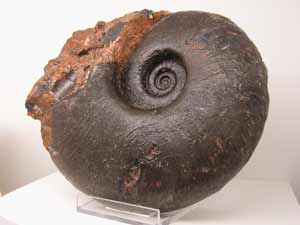
Ein Schwerpunkt der Sammlung sind wunderschöne Ammoniten, die zum großen Teil aus der direkten Umgebung stammen. Die Region um Epidavros ist international als einmaliges paläontologisches Denkmal für die Fauna der Ammoniten anerkannt. Ammoniten waren Seetiere, die etwa 2000 Arten umfassten. Vor 65 Millionen Jahren - zeitgleich übrigens mit den Dinosaurieren und anderen Tieren - verschwanden sie. Kleine schön geschliffene Exemplare kann man im Museumsshop kaufen.
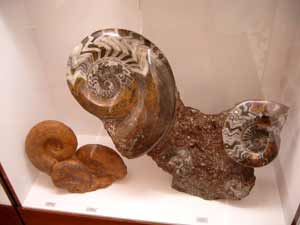
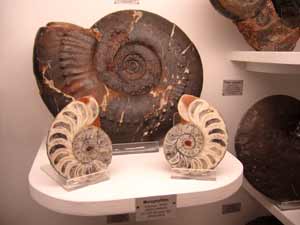
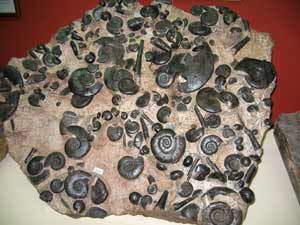
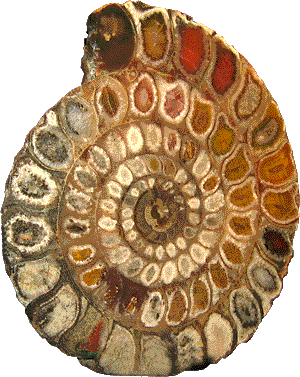
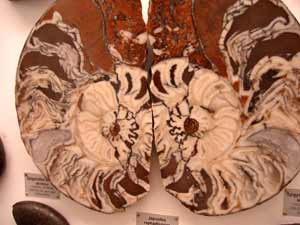
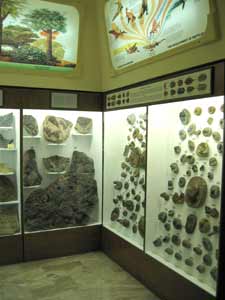
Eindrucksvoll ist die Sammlung von farbigen
Kristallen aller Art. Zu sehen sind auch fünf Millionen Jahre alte
Muscheln von der Insel Kythira und von Methoni (Bild rechts)
Die steinernen Blumen (unten) sind etwa 410 Millionen Jahre alt.
Very impressive is the collection of colorful crystals. Also you can see five million years old shells from the island of Kythira and from Methoni (photo right). The stone flowers (photo down) are 410 million years old!
Zwei sehr schöne Exemplare
von Ammoniten aus der Gegend von Epidavros, die international als einmaliges
peläontologisches Denkmal für Ammoniten gilt. (Fotos oben
und rechts daneben)
Two very nice pieces of ammonites from Epidavros
(photos right and up)
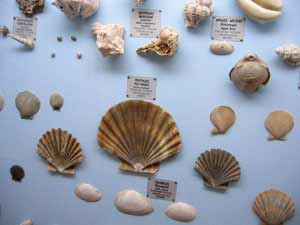
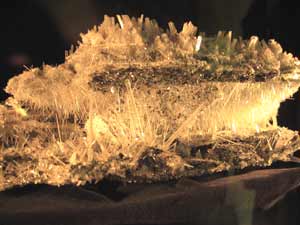
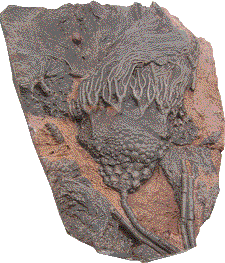
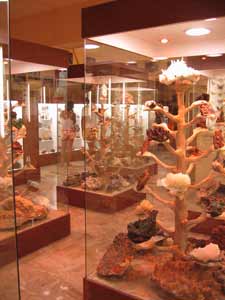
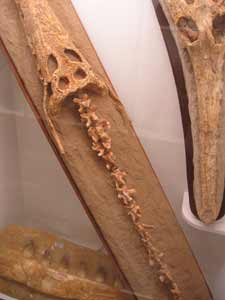
Für wenig Geld gibt es im Museumsshop schöne geschliffene Kristalle zu kaufen. (Foto unten links). Der Ankerit (Bild unten) stammt aus Lavrio in Attika, einer ganz bekannten Fundstätte für viele Mineralien.
For little money you can buy in the museums shop nice
crystals.
The ankerit (photo left down) is from Lavrio in Attika where a lot of
different crystals are coming from.
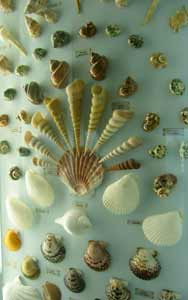
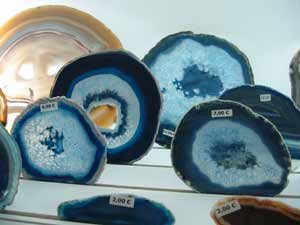
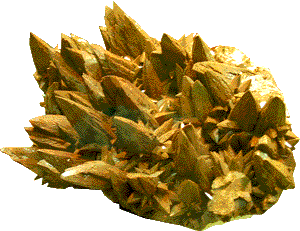
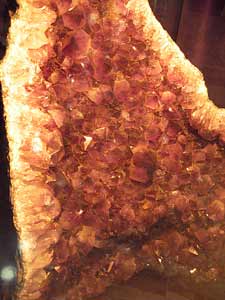
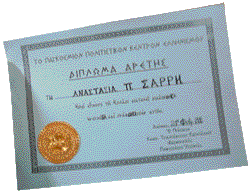
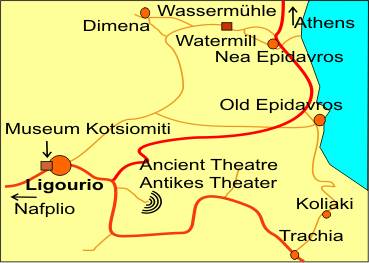
Der Besuch des Museums lässt sich
übrigens sehr gut mit einem Abstecher zur alten
Wassermühle bei Nea Epidavros kombinieren. Es sind nur 15 Minuten
Autofahrt.
Sehenswert sind in Ligourio auch die zahlreichen byzantinischen
Kirchen.
After the visit to the museum it is recommended
to go to the old
watermill near Nea Epidavros - 15 minutes by car.
Visit also in Ligourio the byzantine
churches.
Für ihre jahrzentelange ehrenamtliche Arbeit erhielten Anastassia Sarri-Kotsiomiti und ihr Mann Wassilis Kotsiomitis vom Weltzentrum für den Hellenismus eine Auszeichnung. Das Diplom wurde vom Präsidenten der Organisation Prof. Karagiannis persönlich überreicht. Die Museumsmacher bedankten sich mit einem 400 Millionen Jahre alten Ammoniten. In ihren Dankesworten lobte Anastassia vor allem die Geduld und Hilfsbereitschaft ihrer vier Kinder, ohne die das Museum nicht zustande gekommen wäre. Der Jüngste studiert übrigens Geologie!
Öffnungszeiten:
1. Mai bis 30. September
9.00 - 14.00 und 16.30 - 19.30
Sonntags von 10.00 - 14.30 Uhr
Für Gruppen
nach Vereinbarung auch außerhalb der Öffnungzeiten.
1. Oktober bis 30. April:
täglich 9.00 bis 16.00 Uhr,
Sonntag von 10.00 - 14.30 Uhr Montags geschlossen.
Fax: 27530 22588
www.museum-kotsiomitis.gr
e-mail:info@museum-kotsiomitis.gr
Eintritt: Erwachsene 4 € ermäßigt 2 €
Entrance: adults 4 €, reduced 2 €
1st of May - 30th of September
9.00 a.m.- 2 p.m. and 4.30 p.m. until 7.30 p. m.
1st of October - 30th of April
daily 9. a.m. - 4.00 p.m.
On Mondays closed
For groups also other times can be agreed.
